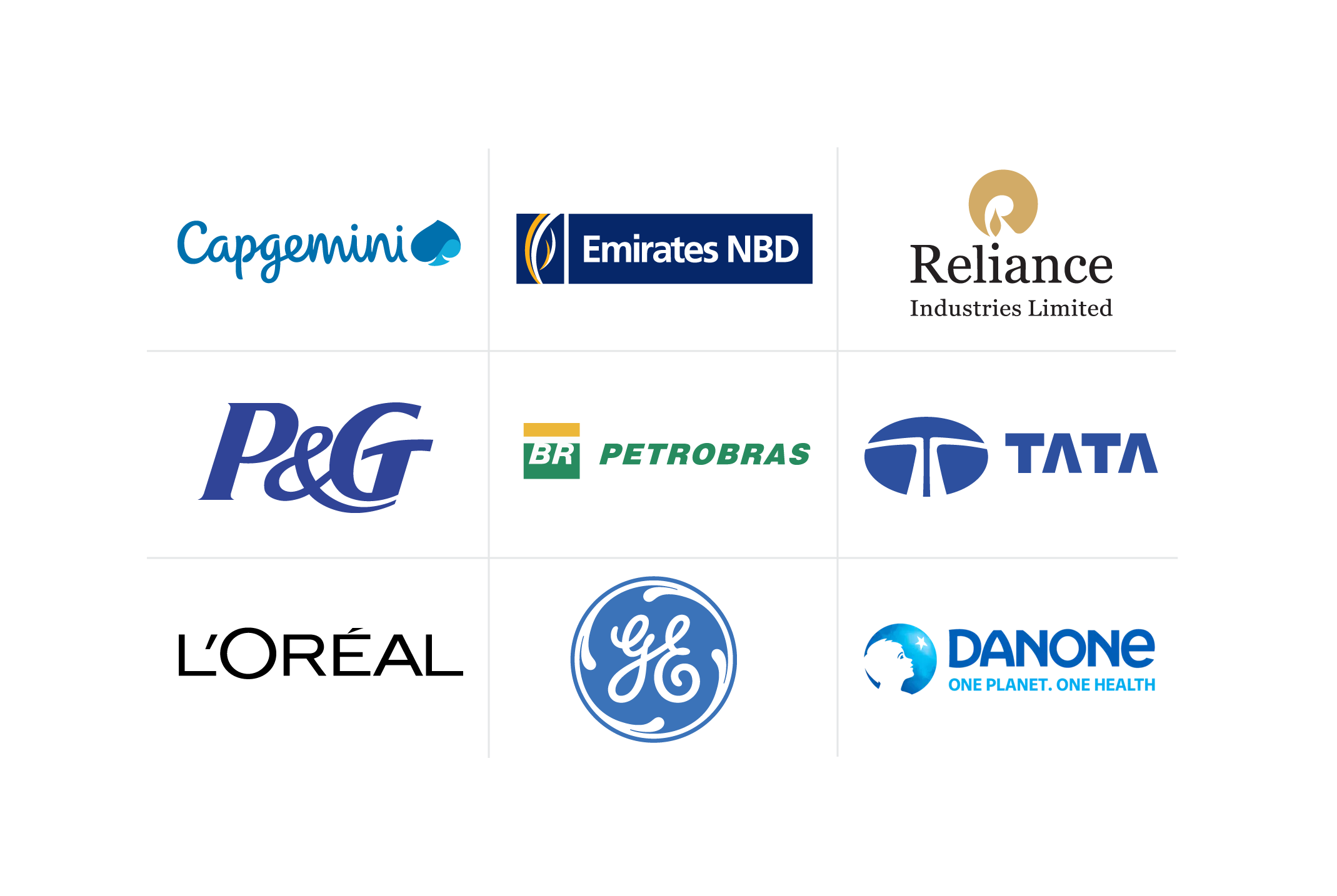Innovative Learning Methods: Revolutionizing Corporate Workforce Development
Innovative learning for workforce development can benefit both employees and companies. Discover what innovative learning is in the workplace, methods for a successful plan, technological considerations, and more.
![[Featured Image] A woman works on a laptop, engaged in an innovative learning program.](https://d3njjcbhbojbot.cloudfront.net/api/utilities/v1/imageproxy/https://images.ctfassets.net/2pudprfttvy6/qhONUwNQf3Vmkvd0S5vhL/ca1f349494af04e82a7e43d544d9d82e/GettyImages-1223158606.jpg?w=1500&h=680&q=60&fit=fill&f=faces&fm=jpg&fl=progressive&auto=format%2Ccompress&dpr=1&w=1000)
Innovative learning in the workplace involves incorporating interactive, flexible, and technological methods into training and education. Some of these you might consider using are personalized learning, video-based learning, gamification, and simulation training. Learning in the corporate space involves more than just training new hires, and many companies recognize that employee learning and development (L&D) holds great value in various business aspects, such as increasing productivity, employee retention, and attracting new employees to your company.
Explore the concept of innovative learning in the workplace, methods for assisting you in implementing a successful plan, technological considerations, and more.
What is innovative learning?
If you utilize innovative learning methods, such as virtual reality and gamification, within your organization, you can provide your employees with a stronger skill set as well as ways to become more productive. By incorporating innovative learning methods, employees and organizations can benefit in numerous ways.
As technology continues to evolve rapidly and alter jobs, corporate training and learning must grow with it. This means employees will need new skills to manage new technology, and companies will need access to new learning and training techniques. A prime example is the rise of AI and how it will transform the workplace.
Characteristics of successful innovative learning programs
As you aim to improve learning programs as an L&D leader, you'll want to know the signs of success. A few indicators of a successful innovative learning program include the following.
Adaptability in learning delivery
Since one of the main factors driving innovative learning in the workplace is the rapid progress of technology, adaptability is essential for creating a successful plan. Many L&D professionals will focus on aligning learning and development with business goals, but this alignment is only possible if companies have consistent insight into ever-evolving trends and existing and future gaps in learning. Openness to change will help tailor your learning plans for the best future outcomes for employee benefits and company success.
Integration of technology for enhanced engagement
When creating a learning program, ensure you integrate technology that will benefit employees’ learning and continued engagement. One important aspect is choosing a simple-to-use platform for both employees and administrators. This can be especially helpful if the platform can monitor performance and engagement. Another key aspect is finding an L&D platform that integrates well with a variety of operating systems and devices. This allows your employees to learn in different environments.
Personalization and tailored learning paths
Personalizing the learning experience is a core aspect of creating a successful learning program. Since not everyone learns the same way, you will want to find out how your employees learn best. Methods may depend on whether your workforce is remote, in-office, or hybrid. You also may want to incorporate personalized training programs that specifically align with each individual’s goals.
Innovative learning strategies and models
You may consider several key components to include in your innovative learning strategy. The following models typically encourage employees to use these tools to sharpen their workplace skills and critical thinking within unique, memorable formats. These components may not apply to every learning situation, so you will want to tailor them to your specific company employees.
Microlearning
Workplaces can use microlearning by creating short-form content that your employees can consume efficiently, rather than long training sessions that take up large portions of time. Essentially, microlearning decreases the amount of repetitive information that an employee must consume, shortening the learning process. Microlearning includes video tutorials, assessments, online lessons, and more. Employees need easy access to whatever format the microlearning is in, making this an ideal method for mobile learning.
Gamification in learning
Gamification happens when administrators apply game design elements and principles to learning techniques in order to improve engagement. Some techniques may include a point system or leaderboards as employees complete modules or other programs. This technique could particularly motivate employees with a competitive spirit.
Virtual reality
Virtual reality (VR) immerses your employees in real-life scenarios that provide unique training experiences. These technologies especially give employees a chance to improve their workplace skills. For example, VR training might simulate a situation where an employee can practice leadership skills and conflict resolution without experiencing real-life repercussions.
Collaborative learning platforms and social learning
Many workplaces already integrate collaborative learning in their daily work, such as asking questions in an office or virtual setting. Digital learning platforms might include a more formal approach through learning management systems and online forums. These platforms allow employees to connect by providing group support for e-learning courses and shared camaraderie. Another form of social learning includes user-generated content platforms, which allow employees to interact, create forums, and curate shared learning paths.

Benefits of innovative learning for companies
Companies can find great value in embracing innovative learning. It benefits not only employee retention and personal growth but also the company’s performance and growth. Some potential benefits companies may find by using innovative learning include the following:
Increased employee engagement and satisfaction
Innovative learning that also helps employees address their personal goals for professional development can increase employee engagement. Overall, if you want to retain employees long-term, you may want to consider implementing innovative learning strategies.
Remaining current with critical knowledge and skills
Innovative learning is crucial to employees acquiring new skills and understanding technological advancements. LinkedIn found that job skill sets have changed by about 25 percent since 2015 and should double by 2027 [1]. In addition to enhancing an employee’s sense of purpose in their work, having access to innovative learning techniques, such as microcredentials, helps your employees stay up-to-date on technology and other special skills.
Enhanced problem-solving and creativity in teams
Innovative learning fosters a creative environment for employees to develop the ability to think strategically, which can positively affect your company’s growth. Organizations that value strong leadership and continuous learning can create more empowered workers, which can lead to developing innovative ideas and solutions that benefit your company.
Challenges in implementing innovative learning
You may face certain challenges when implementing a new learning program. Change tends to meet resistance, especially if things have been done a specific way for a long period of time. Some common challenges include the following.
Resistance to change
Employees and management may find that change disrupts the processes they’re already comfortable with. Even if the plan will benefit new employees, they may still be skeptical of new methods. To help ease employees’ minds, communicate why the change is happening, explain the benefits, and ensure they have input in the process.
Addressing technological barriers
Technology rapidly evolves, so certain barriers and challenges may arise when using new platforms. Try to make it as easy as possible for your employees to access the learning resources. If they face technical limitations, your employees are less likely to engage with the material. To mitigate this potential issue, ensure learning resources are searchable and user-friendly while providing both desktop and mobile options.
Balancing innovation with compliance and regulatory requirements
If you implement a new learning management system (LMS), you will want to ensure you are continuing to incorporate compliance training into your LMS. Doing so can help your company avoid large fees and issues in the workplace. A few benefits of adding compliance training into your LMS are easy audits, data that can tell you who needs more training, and the ability to effectively manage risk. You will no longer need to worry about paper certificates to prove that an employee has completed the training because all information will be digital.
Measuring the impact of innovative learning initiatives
Assessing the success of your L&D initiatives will allow you to make improvements where needed and capitalize on what is going well. A few ways you can measure the impact of your learning initiatives include the following:
Establish key performance indicators (KPIs): Choose a few different metrics that will help you determine effectiveness and success. Some might include participation, engagement, and completion rates.
Gather feedback and analyze learning analytics: One method for gathering feedback may include sending out a training evaluation questionnaire. This allows you to ask specific questions to discover employee opinions and experiences related to your program. Then, you can analyze the feedback to improve your initiative for the future.
Demonstrate return on investment (ROI): When planning to conduct an ROI for your L&D program, one important component includes conducting an analysis before training begins to establish a baseline performance. This allows you to compare your organization’s performance before and after completion of the training to determine its effectiveness.
Integrating innovative learning into company culture
Innovative learning is just one component of creating a strong, positive company culture, especially if it involves continuous learning. Holding ongoing development programs or workshops can help your employees maintain a current skill set while keeping them prepared for new tasks. It can also build a community of collaboration, which enhances problem-solving and idea-sharing.
Successful case studies
Several companies have found success by using innovative learning models and techniques. A few companies that demonstrate innovative learning cultures include the following:
Canva: Introduced an internal initiative called Canva University, which provides a variety of courses and promotes continuous learning
Dropbox: Holds hackathons, workshops, and other opportunities to learn and grow within the company
Microsoft: Offers a diverse set of training courses and certifications to further develop the technical abilities of its employees, making sure they acquire the most current knowledge in the industry
Emerging trends
Certain technological trends continue to shape innovative learning in the workplace, including the following:
Artificial intelligence: Generative AI is a hot topic across many industries. According to McKinsey & Company, 30 percent of top innovative companies are already deploying AI in research and development [2]. Companies have also started implementing AI strategies in their L&D plans. Not only can this technology increase the efficiency and scalability of programs, but it can also help L&D professionals quickly tailor programs at an individual level.
Data analytics in shaping learning experience: L&D continues to rely on data analytics to accurately assess an employee’s skills. Having specific data points on how your employees engage with and retain information from your training programs can help you tailor the content to be more time—and cost-effective.
Getting started with Coursera
If you utilize innovative learning methods, such as virtual reality and gamification, within your organization, you can increase employee retention, reduce costs, and provide your employees with the opportunity to better understand their customers.
With Coursera for Business, you can train teams across your organization in the skills that matter most in today’s digital economy. Your employees will gain access to content from 350+ leading universities and industry partners, where they can build real-world experience with innovative skills, tools, and technologies while earning globally recognized credentials. Our customizable, scalable learning solutions balance workplace and technical skills training in diverse formats, from video clips to guided projects and Professional Certificates. Accelerate your digital transformation and equip employees to drive growth with Coursera.
Article sources
LinkedIn Learning. “2023 Workplace Learning Report, https://learning.linkedin.com/resources/workplace-learning-report-2023.” Accessed June 17, 2025.
This content has been made available for informational purposes only. Learners are advised to conduct additional research to ensure that courses and other credentials pursued meet their personal, professional, and financial goals.

